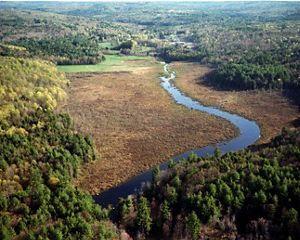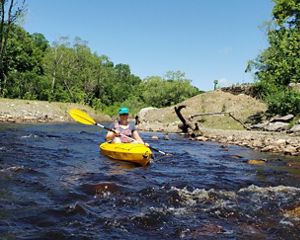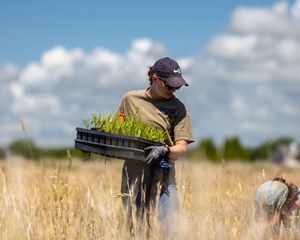_4000x2200.jpg?crop=0%2C0%2C4000%2C2200&wid=1300&hei=715&scl=3.076923076923077)
A Remarkable Restoration of the Fannie Stebbins Wildlife Refuge
TNC and partners protect and restore the original floodplain forest ecosystem at Fannie Stebbins Memorial Wildlife Refuge along the Connecticut River.
At the Fannie Stebbins Memorial Wildlife Refuge along the Connecticut River in Longmeadow, the floodplain greenery is so full of life that the air practically vibrates with the noises of insects and birds.
Floodplain forests like these are among the rarest and most threatened natural communities in the state, and the Stebbins Refuge is the largest remaining tract of intact floodplain forest in the Connecticut River watershed. Quite remarkable, considering it sits just outside the city of Springfield, and across the river from Six Flags New England.
Floodplain forests provide a variety of important wildlife habitats, improve water quality by capturing sediment and filtering pollutants, and also help buffer rivers during catastrophic flooding.
The Story of Stebbins Refuge
This is where Kate Leary began studying plants in 1996. Then a recently retired teacher taking New England Wildflower Society (now Native Plant Trust) classes, Leary was soon recruited to be a trustee of the Allen Bird Club. Beginning in the 1950s, the Club assembled the Stebbins Refuge with small, one-by-one purchases of land.
Leary’s dedication to this place never ceased as she scrambled to secure grants to remove the invasive plants, like Japanese knotweed, that threatened to overrun the refuge’s floodplain. However, as committed Refuge board members and volunteers became older, the Allen Bird Club needed a long-term plan for the stewardship of their land.
“We reached out to The Nature Conservancy because we’d decided to convey the property to an entity that could secure it in perpetuity,” Leary says about the transfer of the property to TNC and to the U.S. Fish & Wildlife Service (USFWS) for inclusion in the Silvio O. Conte National Fish & Wildlife Refuge. In spring 2017, the Club donated 244 acres to TNC that was restored using funding secured from the U.S. Department of Agriculture’s Natural Resources Conservation Service (NRCS) Agricultural Conservation Easement Program.
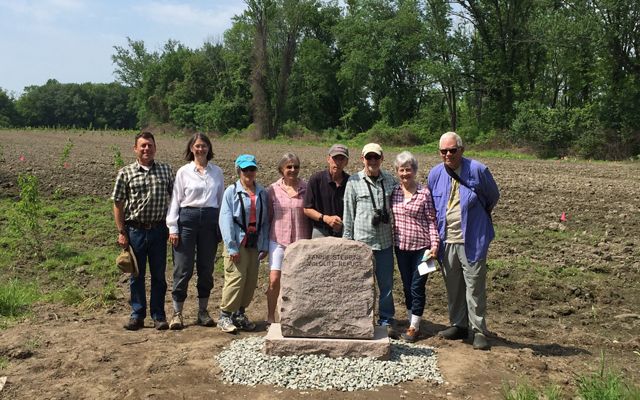
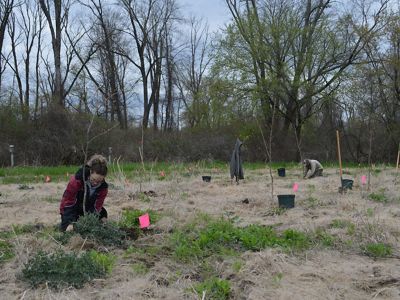
Restoring the Floodplain Forest
From 2017 through 2019, TNC and a restoration team including members from Friends of Stebbins, NRCS and USFWS, addressed several stressors impacting natural processes on the site—including forest fragmentation, invasive plants and altered hydrology at the site—to restore the area to its original floodplain forest ecosystem. This work included the planting of 7,892 trees (including disease-tolerant American Elms), vegetation control, installation of deer fencing, removal of an old road and more. 20 wood duck nest boxes and one osprey nest platform were also placed in the wetlands to better support key species in this habitat.
“This has been an unprecedented opportunity to restore part of the floodplain habitat that once dominated the landscape along the Connecticut River,” says TNC in Massachusetts Director of Stewardship and Restoration Karen Lombard. “It’s thanks to the vision and commitment of many that we’re here.”
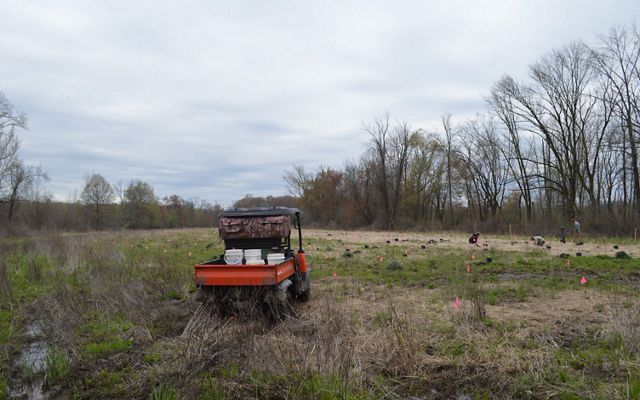

As the restoration wrapped up, TNC put together a report outlining the process and outcomes of the three-year project. The report was finalized in August 2020. The final step is transferring the remaining restored land to the U.S. Fish and Wildlife Service for inclusion in the Fannie Stebbins Unit of the Conte Refuge.
Markelle Smith, who collaborated with all of the partners on the project during her time at TNC, says, “It’s gratifying to see Kate’s vision and the Allen Bird Club’s mission achieved at Stebbins. This was a true partnership project that resulted in the protection and restoration of a significant floodplain along the Connecticut River."
TNC is excited about the positive results and plans to replicate this project design to model nature-based solutions in other areas.
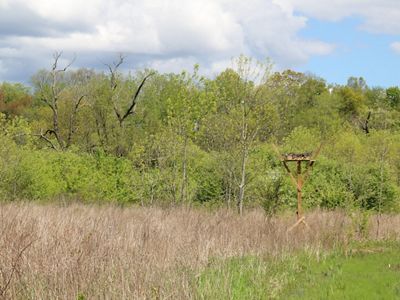
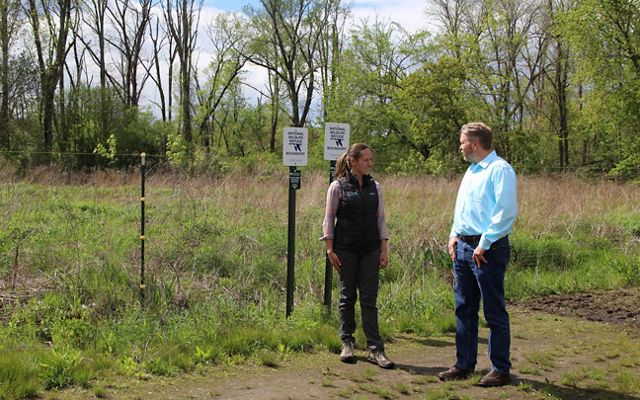

The Big Picture
Silvio O. Conte National Fish and Wildlife Refuge
The Stebbins Refuge is one small-but-significant part of the larger Conte National Fish and Wildlife Refuge, which encompasses the 7.2 million-acre Connecticut River Watershed. This four-state watershed is regionally valuable because it both supports species migration necessitated by climate change and is essential for people across New England to access and connect with nature.
TNC has been a core partner since the Refuge’s establishment in 1997 by helping define priority conservation areas, collaborating on land projects, advocating for federal Land and Water Conservation Fund (LWCF) monies, and leading the Friends of Conte at various points. This coalition of more than 70 organizations and individuals strengthening the health of the watershed is critical to supporting the Refuge and the plants, animal and people it supports.
With the passage of the Great American Outdoors Act in 2020, which brought full funding for LWCF, TNC focused on the opportunity to bring significant funds to the Refuge. Since 2005, the Friends, in partnership with members of Congress, have secured LWCF funds to protect 37,000 acres valued at $33 million within the watershed. In FY22, the President’s budget included $5 million for land conservation by the Conte Refuge, and the House and Senate Interior Appropriations Bills included $3.7 million and $8.5 million earmarks for projects, in New Hampshire and Vermont, respectively.
“The Friends identified 55 land protection projects across the entire Conte Refuge that could be completed in fiscal years 22 and 23—$17 million worth,” says Markelle Smith, who chaired of the Friends of Conte for several years. “This funding is critical to making these conservation opportunities reality."
